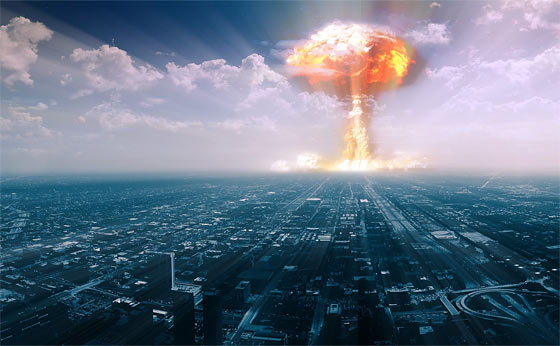Immediately After The Nuclear Explosion

A nuclear explosion is one of the most devastatingly catastrophic incidents imaginable. Our normalcy bias prevents most of us from contemplating such a horrific event and therefore most people have not planned for it in any way.
The reality is that a nuclear explosion could occur, and as time goes on – the probability may be increasing.
Should a nuclear explosion happen, among the many appropriate actions that one should take, there are four immediate questions to ask, assess, and act upon to improve your odds of survival.
What was the location of the bomb when it exploded?
Your first realization that a nuclear explosion took place will either be from your own observation or from a media source. If you observed it, then you are close – and you especially need to quickly assess the answers to the questions posted here.
It will be important to know where the explosion took place so that you can make some educated decisions what to do next. Immediately tune in your media outlets, your AM radio or Public Alert emergency weather radio to discover where the blast took place. You will need to gauge what you do next based on your proximity and direction to the nuclear explosion.
Where is the fallout going?
Near the point of the explosion, and other than the devastating blast and thermal radiation, there is a great intensity of ionizing radiation consisting of neutron and gamma radiation. If you are near the point of explosion, you are likely already non-existent, or are about to be.
However with increasing distance the radiation decreases, and if you are further away, your odds of survival are higher – but the danger is not over.
A nuclear explosion will result in some amount of radioactive fallout which is called residual radiation. Fallout is a mixture of radioactive materials with the pulverized debris from the explosion. The fallout is within the expanding mushroom cloud which then begins to drift with the wind currents as the particles begin to fall to the ground.
The heavier radioactive particles will fall closest to the origin of the explosion. The farther away you are from the point of explosion, the less airborne radioactive material will reach your area.
Since the fallout will be worse along the downwind path, it will be important to know the wind direction. It is generally safe to say that each region of the country has its own predominant prevailing wind direction, although this will vary during weather events.
For example, if you know that the wind in your area usually comes from the West, then you know that the fallout will likely be traveling from West to East from its point of origin. This will enable you to make an educated decision to bug-out North or South – if you are near the potential hot zone.
Where is the perimeter of the hot zone?
The perimeter of the fallout zone will be shaped depending on the size of the explosion coupled with the upper level winds and their direction. The majority of the fallout will follow upper level winds because the explosion will reach tens of thousands of feet into the atmosphere.
If there is little or no wind, the fallout hot zone will be shaped more or less circular as the cloud’s diameter expands while radioactive fallout begins to fall back to the earth.
If there is wind, the fallout hot zone will be shaped somewhat like an oval with an expanding downwind element as it spreads and slowly dissipates while radioactive particles fall back to earth.
Your survival goal will be to stay outside of the hot zone perimeter.
Is there concern about a second nuclear explosion?
If there is one nuclear explosion, it is reasonable to expect that there may have been more that have already occurred or new explosions about to occur.
If you believe that you live within or near a nuclear target area, then your survival may depend on getting away as quickly as possible — at least until you realize whether or not your home region was targeted.
Have a bug-out plan such that you identify several potential destinations which are outside of your metro region or immediate target area. Choose locations in each of four directions from where you are (N-S-E-W) so that you can choose one or two which are perpendicular (90-degree angle) to the nuclear explosion downwind direction. In other words, move sideways to the direction of fallout.
If it is too late for you to escape (you are already caught within the hot zone), and in order to minimize the effects of radiation, remember the following…
If you are in the directly impacted area, stay inside. Building walls, brick, concrete or soil will help protect you from the radioactive material outside.
Radiation levels are extremely dangerous after a nuclear detonation, but the levels decrease rapidly with time, in just hours to a few days.
During the time with the highest radiation levels it is safest to stay inside, sheltered away from the material outside.
Go to the basement or the center of the middle floors of a multi-story building (for example, the center of the 5th floor of a 10 story building, or the 10th to 20th floors of a 30 story building).
Put building walls, brick, concrete or soil between you and the radioactive material outside.
Increase the distance between you and the exterior walls, roofs and ground, where radioactive material is settling.
The longer you stay inside the safer you will be from radiation.
